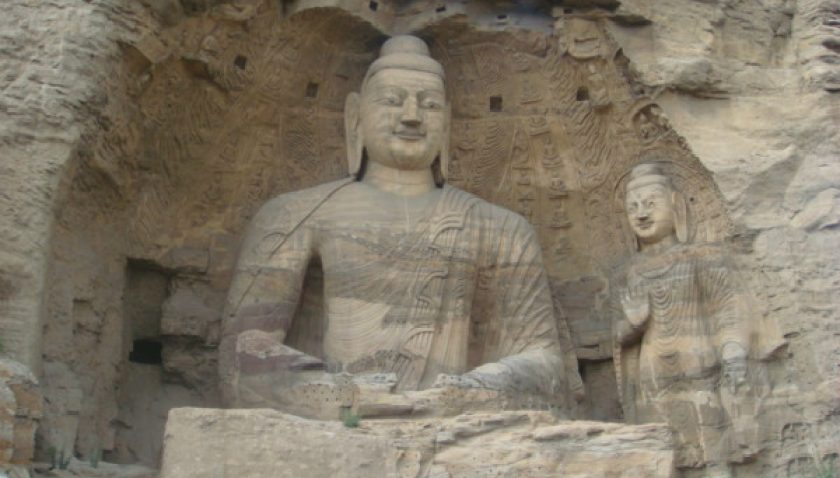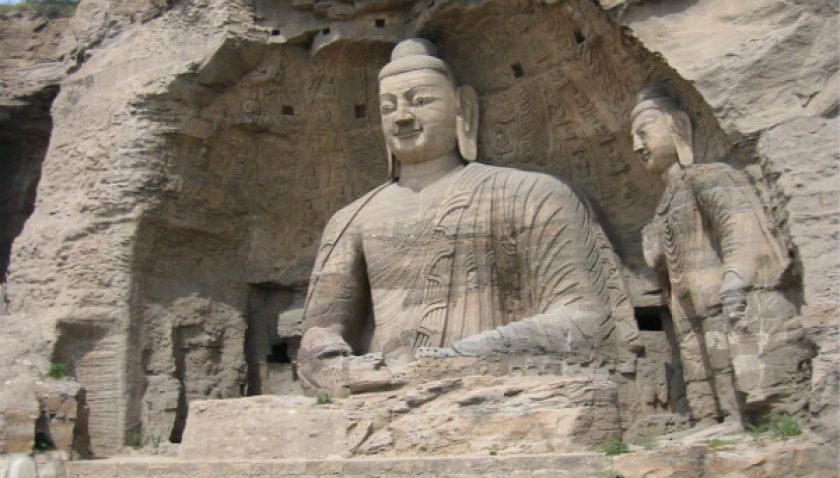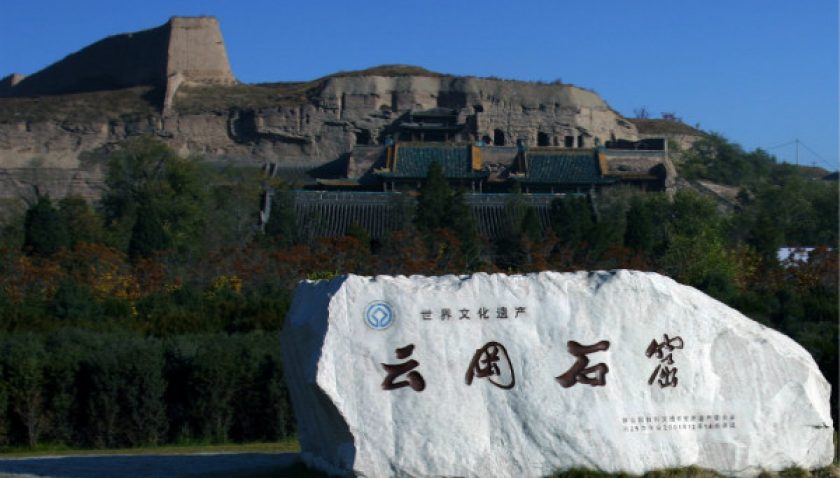Yungang Caves, one of China’s four most famous “Buddhist Caves Art Treasure Houses”, is located about sixteen kilometers west of Datong, Shanxi Province. There are 53 caves that exists, most of which are made during the Northern Wei Dynasty between 460 and 494 AD, with over 51, 000 stone sculptures. It extends one kilometer from east to west and can be divided into three major groups.
The first group (including Cave 1, Cave 2, Cave 3 and Cave 4) is at the eastern end separated from others. Cave 1 and Cave 2 have suffered from rigors of time and the weather. Cave 3, an afterthought after the Northern Wei Dynasty, is the largest grotto among Yungang caves.
Tours normally begin from the second group ranging from Cave 5 to Cave 13. Yungang art manifests its best within this group. Cave 5 contains a seated Buddha with a height of 17 meters. In Cave 6, a 15-meter-high two stories pagoda pillar stands in the center of chamber and the life of the Buddha from birth to the attainment of nirvana is carved in the pagoda walls and the sides of the cave. The Bodhisattva was engraved in Cave 7. The rare seen Shiva Statue in Yungang with eight arms and four heads and riding on a bull is illustrated in Cave 8. Cave 9 and Cave 10 are notable for front pillars and figures bearing musical instruments. Musicians playing instruments also appear in Cave 12. Cave 13 has the Buddha statue with a giant figurine supporting its right arm.
The rest of the caves belong to the third group. Cave 14 has eroded severely. Cave 15 is named the Cave of Ten Thousand Buddha. The caves numbered 16 to Cave 20 are the oldest complexes and each one symbolizes an emperor from the Northern Wei Dynasty and the subject of “Emperor is the Buddha” is embodied. The caves from No. 21 onward are built in the later times and cannot compare to their better preserved counterparts.



